Differences between Breitling Navitimer First, Second, and Third
Click here to watch a video showing the difference between the BREITLING Navitimer First, Second, and Third.
Breitling is a brand that most men know.
The Navitimer is one of Breitling's most iconic models.
However, there are so many different series of Navitimers that it's hard to know what's what...
If you are one of those people, you are probably reading this article.
So, today I'll mainly be talking about the differences between the first, second, and third models of the Navitimer.
The table of contents looks like this.
1. Super simple basic knowledge about the Navitimer
2. What is the difference between the First and Second Navitimers?
2-1. Differences in dials
2-2. Meaning of the AOPA mark
2-3. Various logo patterns
2-4. Two types of movements used
3. What is the difference between the second and third Navitimer?
4. Why has the style changed so dramatically from the Force (automatic winding)?
5. Summary and market price of vintage Navitimers
It is as follows.
What is a Navitimer?
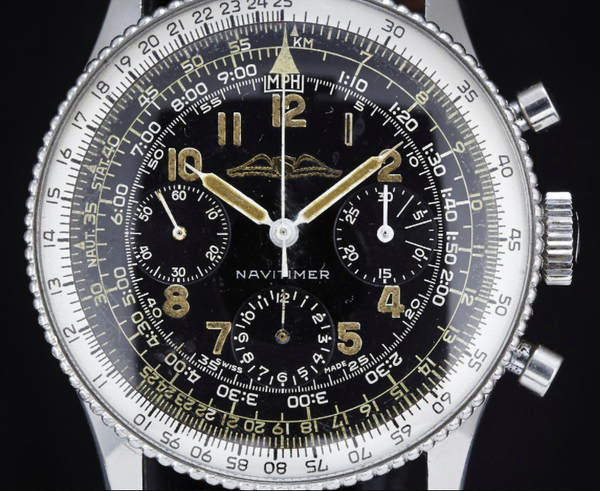
The Breitling Navitimer is one of the most famous models any brand has ever made, and it's high on any vintage watch collector's wish list.
This Navitimer, but the previous Chronomat, was created by Willy Breitling, the third generation of the Breitling family.
What made the Chronomat different from previous chronographs was that it was equipped with a rotating slide rule.
If I tell you about the rotary slide rule, you'll probably want to stop looking, so for now, just think of it as this: for pilots, it was a revolutionary meter that could not only take measurements but also perform advanced calculations!
That was in 1942, right in the middle of World War II.
After the war ended, the technology developed during wartime in aviation was trickled down to the civilian sector, and in 1952 passenger aircraft became the first in the world to operate regular flights between London and Johannesburg.

Breitling, witnessing the development of the aviation industry, began producing watches for pilots.
This was the Navitimer, an evolution of the Chronomat, which was released in 1952, 10 years after the birth of the Chronomat.
The name Navitimer is a combination of "Navigation," which refers to aviation or sea travel, and "Timer," which refers to measurement.
It is clear that pilots at the time found the Navitimer extremely useful and useful.
The Navitimer has received such high praise from pilots that it is said to have given birth to a completely new concept and way of thinking within the genre of watches.
Differences between the bezels of the Navitimer First and Second
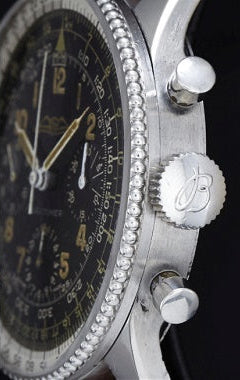

Right: Bezel of the second model (1959) Reference 806
Now, the one on the left is first and the one on the right is second.First, please take a look at the bezel. It features a beaded design that was only found on the first-generation Navitimer.
Look at the second bezel.
The bezel has vertical cuts.
The reason for this design change is that pilots fly planes while wearing gloves.
I also wear gloves when turning the bezel of a watch, but with a beaded bezel the bezel tends to slip.
The round bead bezel of the first model was found to have a drawback in that when pilots wore gloves, the bezel was slippery when turning it, making it difficult to use. As a result, a vertically engraved bezel was devised and adopted for the second model, which prioritized functionality such as less slippage.
Differences between the first and second dials (sub-dials)
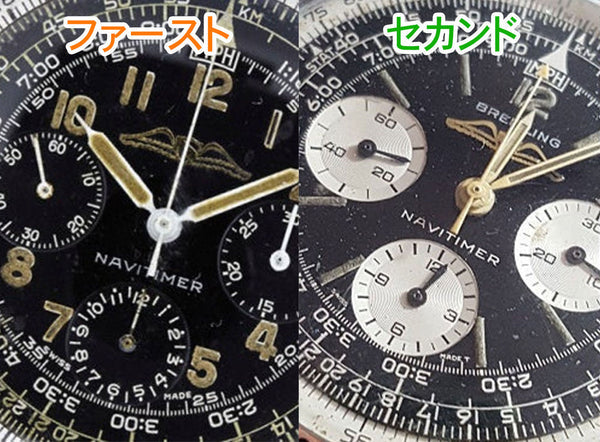
Now let’s look at the differences in the dials.
There are many different patterns, but I'll start by talking about the most common differences.
These will be the colors of the three subdials.
The one on the left is the first and the one on the right is the second, but the first is black while the second is white.
The first model has a black dial with no steps on the inset dial and white markings and hands.
The second model has a stepped white inner dial, with black markings and hands.
This is because in the first model, the subdials were difficult to read when the dial color and the subdials were the same color, so inverted colors were used in the second model.

The AOPA mark that you see now stands for "International Pilots Association" and is an abbreviation for "AIRCRAFT OWNERS AND PILOTS ASSOCIATION."
The International Pilots Association is a church made up of airplane owners, so essentially it's a watch that's approved by pilots.
Brightening has thus been recognized as an official AOPA chronograph, and the wing mark is used on the dial of the Navitimer.
All First Class brands have this double-wing mark and AOPA written in the center.
By the way, there are also some products that do not contain AOPA, but this is because those that contain AOPA are intended for the American market and those that do not are intended for the European market.
However, the second model of the Navitimer has many different patterns for the markings on the dial, so let's take a look at them now.
Various patterns of Breitling's first and second models
As explained earlier, the first logo is AOPA, but there are subtle differences in the design.
As explained earlier, First's basic logo is the double wing AOPA, but it also includes "BUEITLING" and "GENEVE."
Something like this.
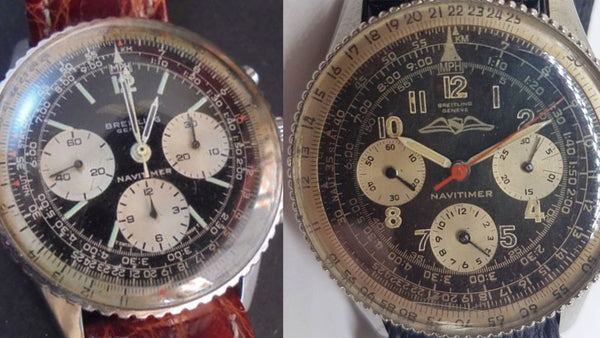
However, if you look closely, you will see that there are versions with the double wing above and below.
And this is the double wing alone version.

In this way, there are many different patterns of logos even for the first brand alone.
Now, here we get to the main topic: explaining the difference between first and second, which can often confuse us.
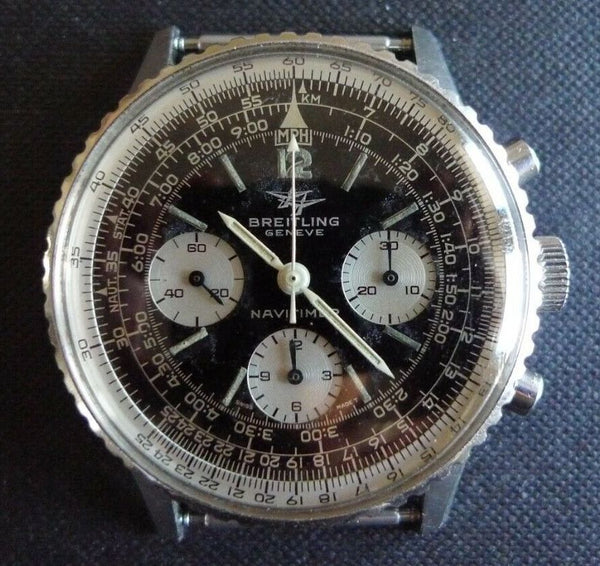
And as I mentioned earlier, the bezel is engraved with vertical lines.
However, even though it has the first AOPA double wing logo, it has a white sub-dial and a vertically engraved bezel.
It looks like this.

The criteria for this will vary depending on the store, but our company classifies it as second class.
This is because it keeps the bezel and sub-dials, which are characteristic of the Second model, to a minimum.
Taking all this into consideration, we believe this is probably from an early second edition.
So, in the early days of the Second Generation, they probably didn't use the twin jet design and still used the AOPA logo.
Please take this as just my speculation.
In addition, it also features a rare logo, the LIP company logo.

Movement used in the Brightening Navitimer AOPA First
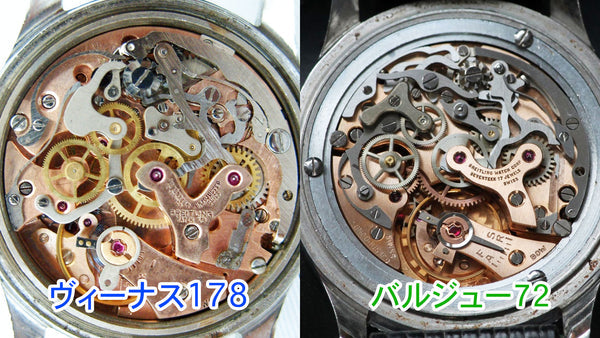
The movement you see on the left is called Venus 178.
When you find the first or second Navitimer, there is almost a 90% chance that it will be equipped with the Venus 178.
From here on, we will introduce the first models equipped with the Valjoux 72 movement, which was rarely installed in the first models compared to the Venus 178.
I don't think it would make sense to explain how amazing their movements are, so I'll give a brief explanation of each company.
I guess not many people know about Venus.
Venus was an ébauche maker, which basically made the movements inside the watches.
It is found in chronographs from various brands, but the most representative one is the Breitling Navitimer.
Venus also produces a variety of other movements, but the 178 is so well-known that it is their most representative movement.
Next up is Valjoux, which is also an ebauche maker like Venus.
They made movements that were used in watches, but what sets them apart from Venus and other ébauche makers is the number of watch brands that use their products.
Valjoux movements are used in Patek Philippe chronographs, and the movement in the Rolex Daytona, which everyone is familiar with, is also the Valjoux 72.
These two companies produced such amazing chronograph movements, but Venus was later acquired by Valjoux, and Valjoux was later acquired by the ETA Group.
Now let's take a look at the third model.
Breitling's third model equipped with the Valjoux 7736
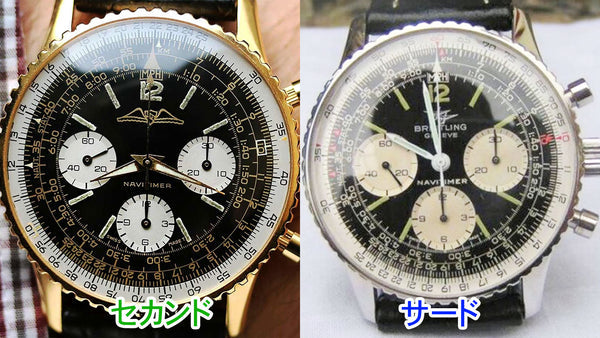
However, when you go to the third model, you'll notice that the sub-dial is larger.
It's easy to understand if you look at the width of the three sub-dials.
As for the movement, this one is equipped with the Valjoux 7736.

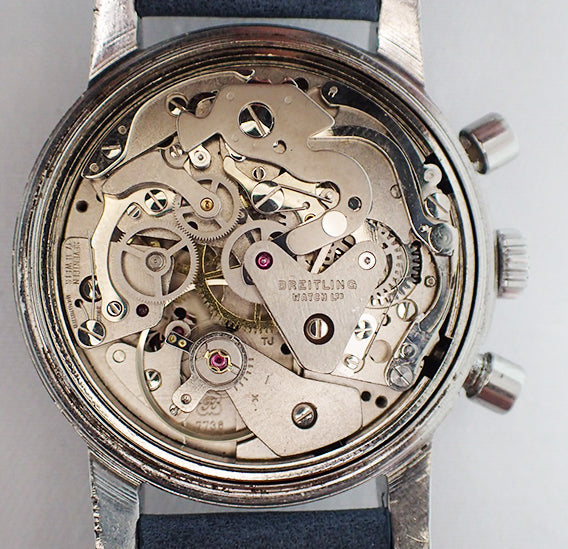
It was developed to reduce the manufacturing costs of movements, but due to its high quality it is used in a variety of watches.
For example, Hamilton, Precitor, Newmark, and CWC all use this movement in their watches and supply them to the Royal Air Force.
That is how reliable and robust the movement was.
If you would like to know more, please take a look at this video, which explains it in more detail if you are interested.
So far we have talked about the third-generation Navitimer, but the fourth-generation Navitimer will have a significantly different style, so let's take a look at the fourth-generation model from here on.
Breitling Chronomatic Caliber 11 1969
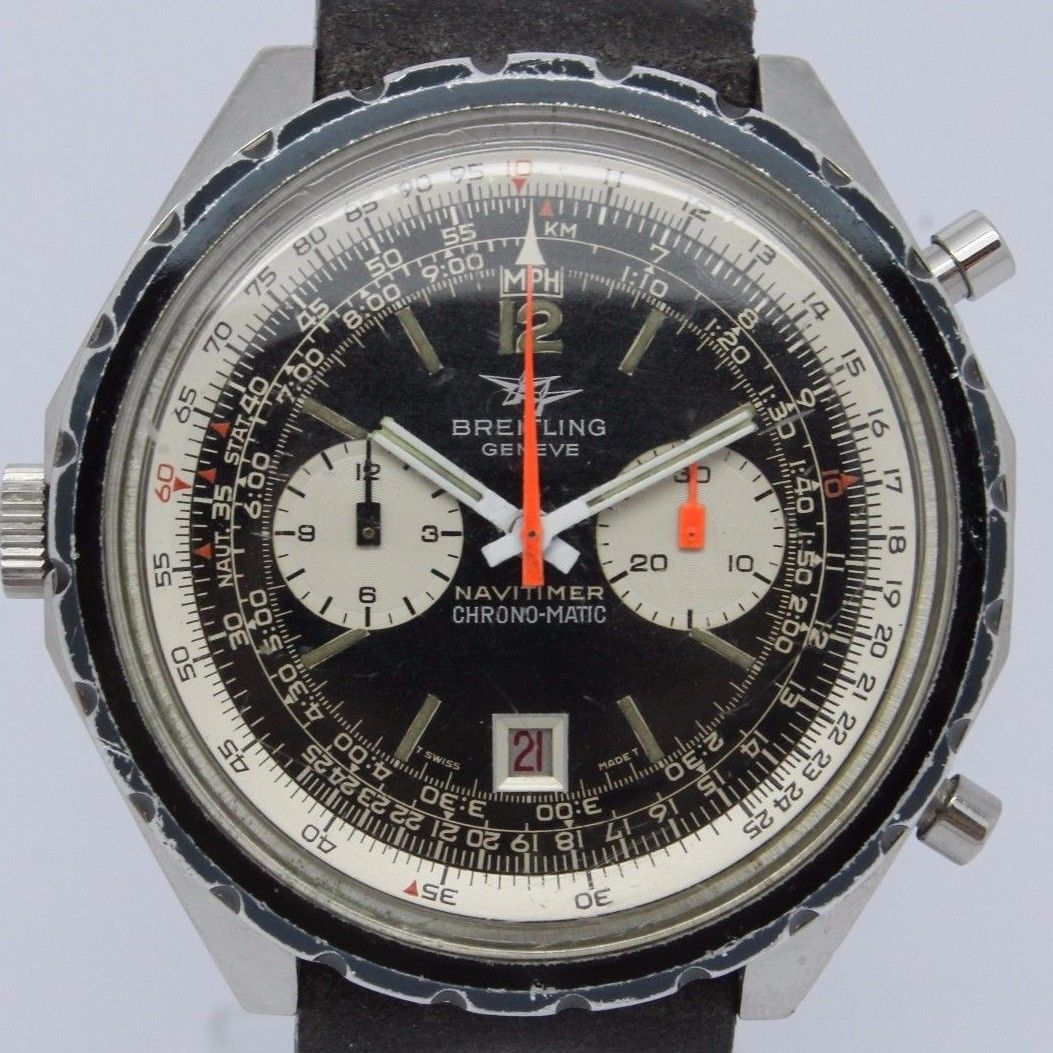

The Navitimer with automatic winding
While the Navitimer underwent numerous improvements, the times were changing dramatically.
All eyes were on Swiss brands to see which would be the first to release an automatic chronograph, a product that had been the subject of nearly 30 years of research and development.
However, by the mid-60s no company had produced a model, so the Swiss watch brands decided to form an alliance.
That alliance is the Heuer-Breitling-Hamilton Alliance.
Development then proceeded with the addition of a company called Dubois-Dépraz to specially develop the movement.
The result of this alliance was the creation of the legendary Caliber 11 .
A distinctive feature of this caliber is that the crown is mounted on the left side, unlike previous models.
The invention of this movement had a major influence on the direction of the Navitimer's revolution.
Then, in 1969, the Navitimer underwent a major change.
Instead of the previous crown on the right, it adopted a crown on the left side and, as a Navitimer Chronomatic, emphasized that it was an automatic model.
The word "Chronomatic" is a combination of the words "chronograph" and "automatic."
For a detailed explanation of the automatic watch development race, please take a look at this video.
summary
So today, I have explained the differences between Breitling's First, Second and Fourth watches.
To sum up, I think the difference between first and second is the most difficult, and since second, third, and fourth are all different movements, I think it will be easier to understand if you use that as a criterion for judgment.
The Navitimer is a globally popular watch, so although its price has not risen as much as that of Rolex, it has still risen compared to the past.
It is particularly difficult to find a First Class in good condition, and the price varies greatly depending on the condition, but the going rate seems to be around 1 million yen.
The first gold plating will cost around 1.5 million yen.
The second one is about 700,000 to 900,000 yen.
Third is 800,000 yen
The Navitimer Chronomatic costs 600,000 yen.
I think that's about it.
However, since it is a Navitimer, it is well-made and well-maintained ones can still be used today.
I would be happy if even a little bit of people could appreciate the charm of the vintage Navitimer.



